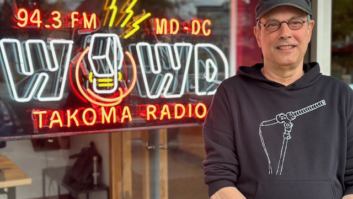
Peter Smyth
This Q&A, part of a series in advance of next week’s NAB Radio Show, is with Peter H. Smyth, chairman & CEO of Greater Media Inc.
RW: As radio executives and employees gather for the convention, what theme do you expect will be the most immediate concern?
Smyth: Everyone’s logical first concern is the economic health of our business and business in general. The past year has been an unprecedented challenge.
RW: What adjective would you use to describe the business outlook for radio in the next three to six months? Why?
Smyth: I term myself cautiously optimistic. Cautious, in the sense that I do not expect that advertising budgets will bounce back immediately to their prerecession levels, nor do I expect that the media mix will be the same. Many advertisers have been forced to use new media tools during the recession, primarily because of budget contractions. What they have found is that they work nicely for many purposes, such as discounts, price and item propagation, and creating urgency.
What we have to do is make sure that we are prepared to show them how much more effective a locally-targeted mix of radio and online media can be. Together, they are cost-effective and produce great, immediate results.
RW: What are radio organizations doing to forge ahead with new media and new technology? What specific instances do you see that offer examples of how radio can build more success at a time when revenue and time spent listening are down?
Smyth: Radio is in a transitional phase where it is clear that what “used to be” isn’t going to be sufficient for our futures, nor is the picture totally clear on the integrated marketing solution approach to local advertisers.
There are still variables beyond our control, such as the evolution of social networking, the sharing and linking of information on demand, and the mobile Internet, that are all works in progress.
What’s significant is that most radio companies are making good-faith efforts to address all of these new media outlets. It’s vital to our future that we be involved in all of these transmission channels, and that we create and deliver audio and other branded information, just as we do on our analog broadcasts. But more, deeper and on-demand content is our future.
Radio revenues are down when you take the narrow measure of Miller Kaplan. But broaden your horizon for a moment and look at the projections for the local online marketplace. It’s still estimated to grow some 7 percent in the coming year, and the areas for growth are not banner ads and search. They are promotional programs, e-mail and public relations programs, according to Borrell Associates.
That’s where we are strong as local media operators. Radio should have far more share of the local onliune marketplace. We’re more targeted than newspaper or television, and a more personal relationship with our audience than many of the pureplay operators can ever hope to be. …
[At Greater Media], in addition to our strategic partnership with Emmis Interactive for our station Web site platforms, we are introducing both video and mobile platforms for individual stations in the company. We’re moving into texting as well as iPhone applications that ensure that our streaming audio is available in a downloadable app.
RW: How is the radio industry doing at getting itself onto new platforms and devices?
Smyth: The onslaught of new devices is so rapid and endless that we have to focus.
While radio would like to be everywhere on everything, it’s just not possible. I think that the emphasis that radio is putting on including tuners on smartphones is important as a reliable backup in the case of an emergency. While the digital infrastructure is becoming more robust, it still is not as reliable as the broadcast structure when natural disasters strike.
Radio proves itself again and again as indispensible in those circumstances, and we should ensure that we can be heard by the broadest possible audience in need.












